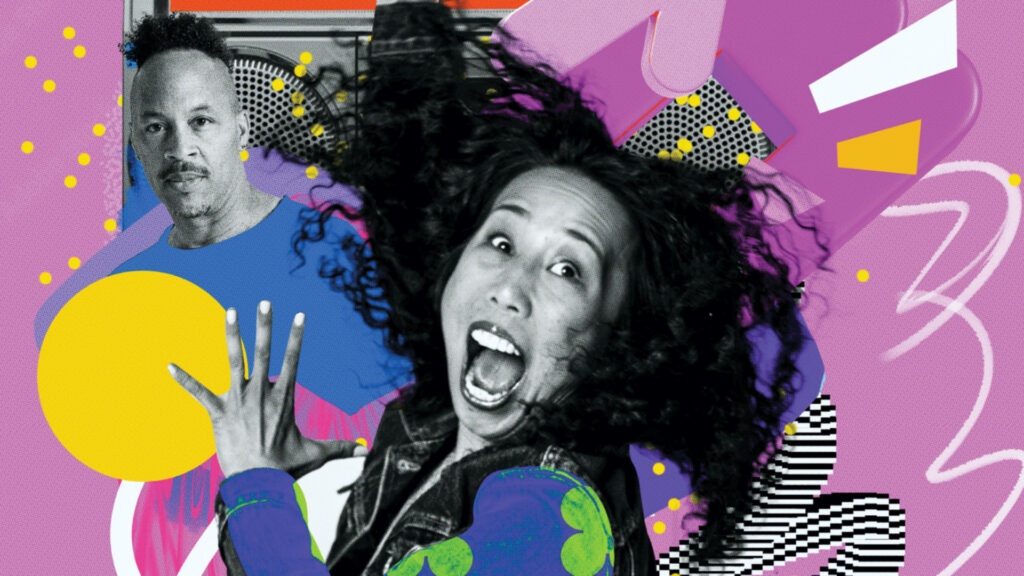Trojan Family Magazine: How USC helped propel hip-hop innovation
April 15, 2024

USC Kaufman faculty d. Sabela grimes (left) and Tiffany Bong encourage students to connect to local communities through hip-hop dance. (Illustrations/Temi Coker)
Some of the foremost innovators in hip-hop are part of the Trojan Family. USC artists and scholars look back on 50 years of the art form — and forward to its future evolution.
WHEN TODD BOYD FIRST ARRIVED AT USC in the fall of 1992, an explosive cultural transformation was underway. The former hip-hop emcee and newly minted professor at the USC School of Cinematic Arts had come to the university with the goal of shaping the nascent field of hip-hop studies.
The scars from the civil unrest that had erupted that spring in neighborhoods adjacent to USC following the acquittal of four white police officers in the beating of Rodney King, a Black man, were still fresh.
“You could still see buildings that had been burnt and damaged,” Boyd says.
From those ashes, a formidable force of creativity was rising. Hip-hop artists in surrounding communities were funneling their pain into profound storytelling and shaping a new West Coast sound.
From that critical inflection point, Boyd helped connect USC to the thriving musical movement at its doorstep. He blazed the trail for USC scholars in every corner of the university who, like himself, study hip-hop’s historical underpinnings and cultural impact.
The creativity that burst forth from communities adjacent to USC now reverberates through arts education at the university. Today, USC’s arts schools, including the USC Kaufman School of Dance, the USC Thornton School of Music and the USC School of Cinematic Arts, are prominent incubators for innovation in hip-hop movement, music and visual culture, respectively. Andre Young — better known as Dr. Dre, one of West Coast hip-hop’s foremost artists and producers — became part of the Trojan Family when he and Interscope Records co-founder Jimmy Iovine launched their school for arts, technology and innovation, the USC Jimmy Iovine and Andre Young Academy, in 2013.